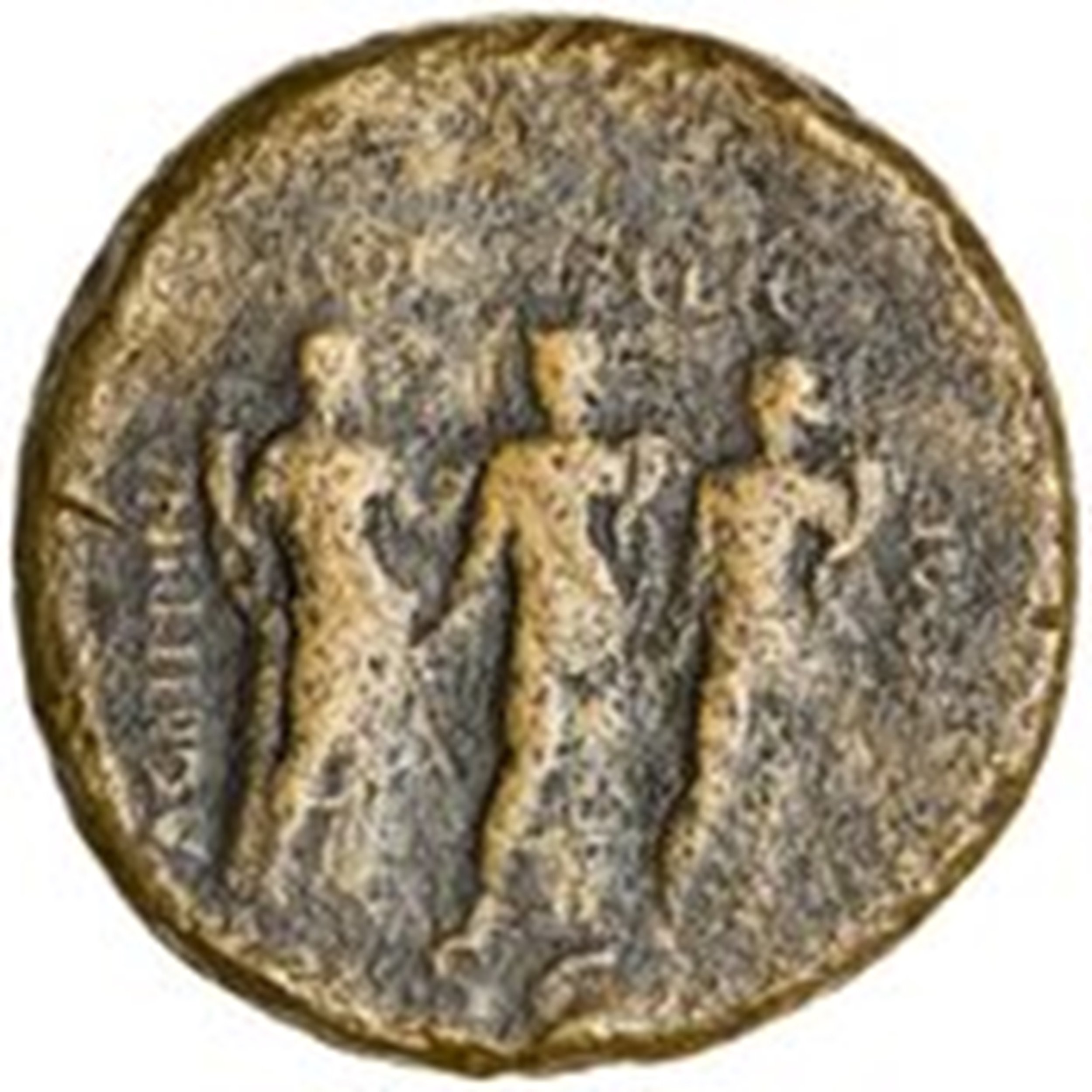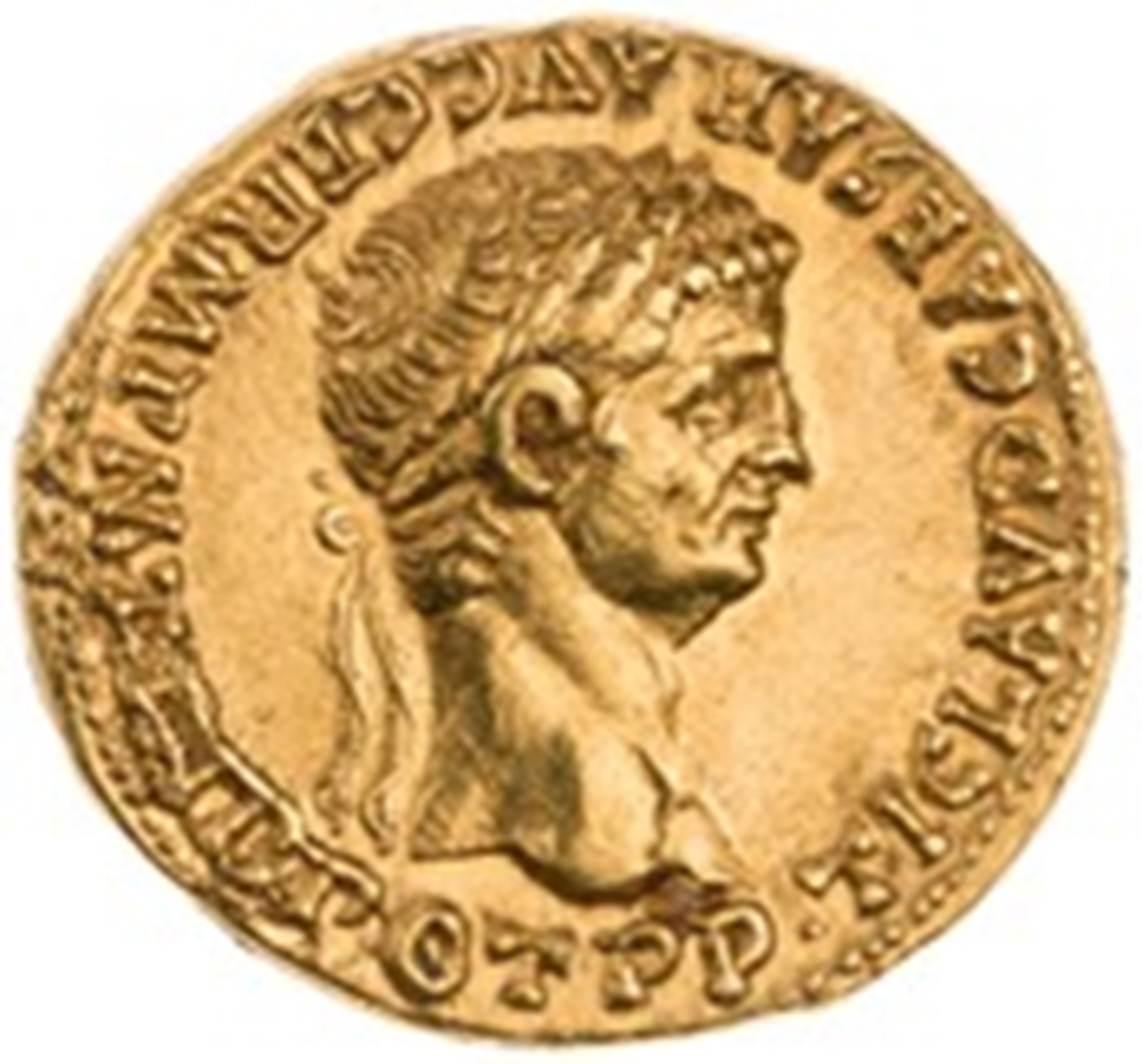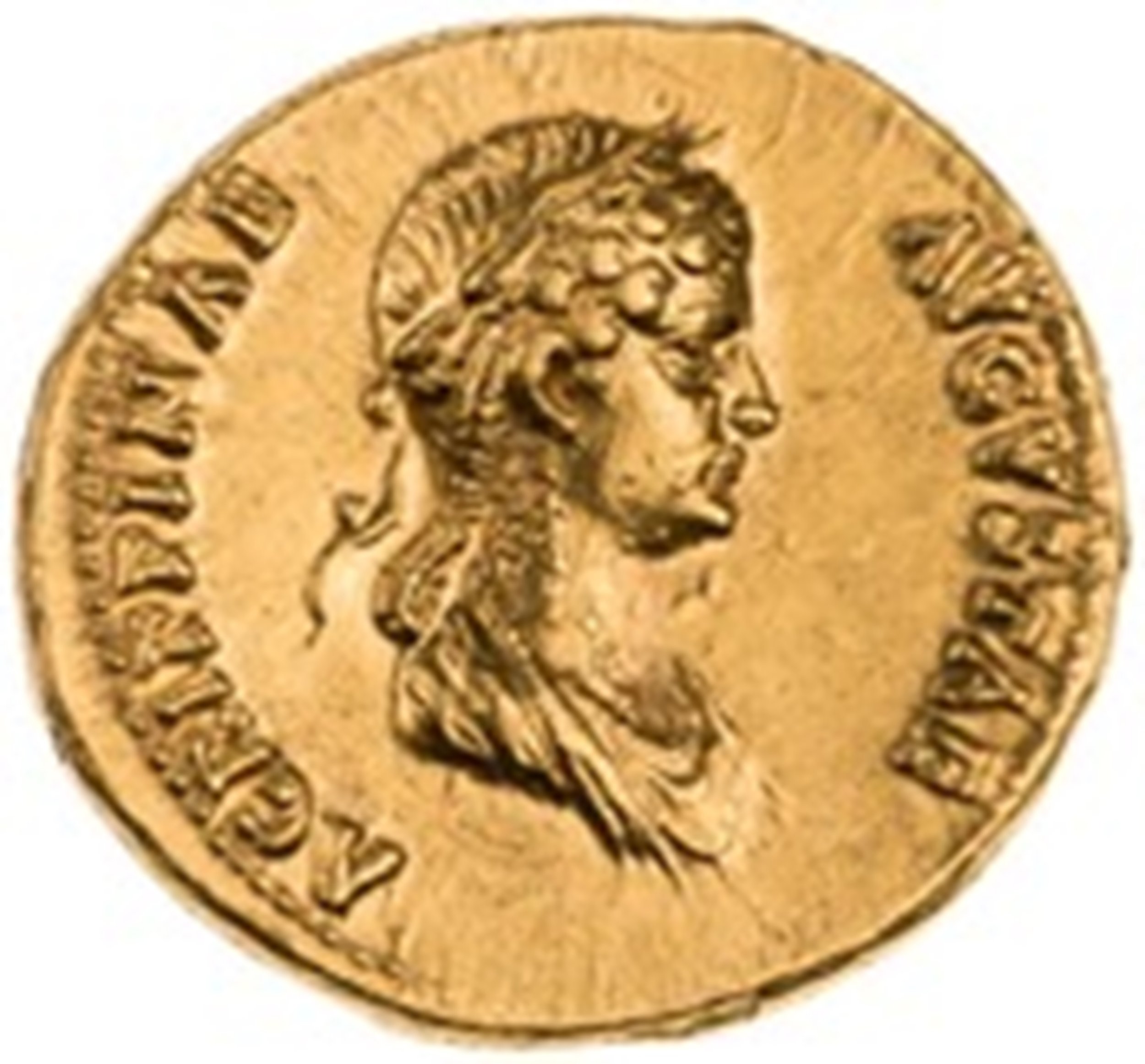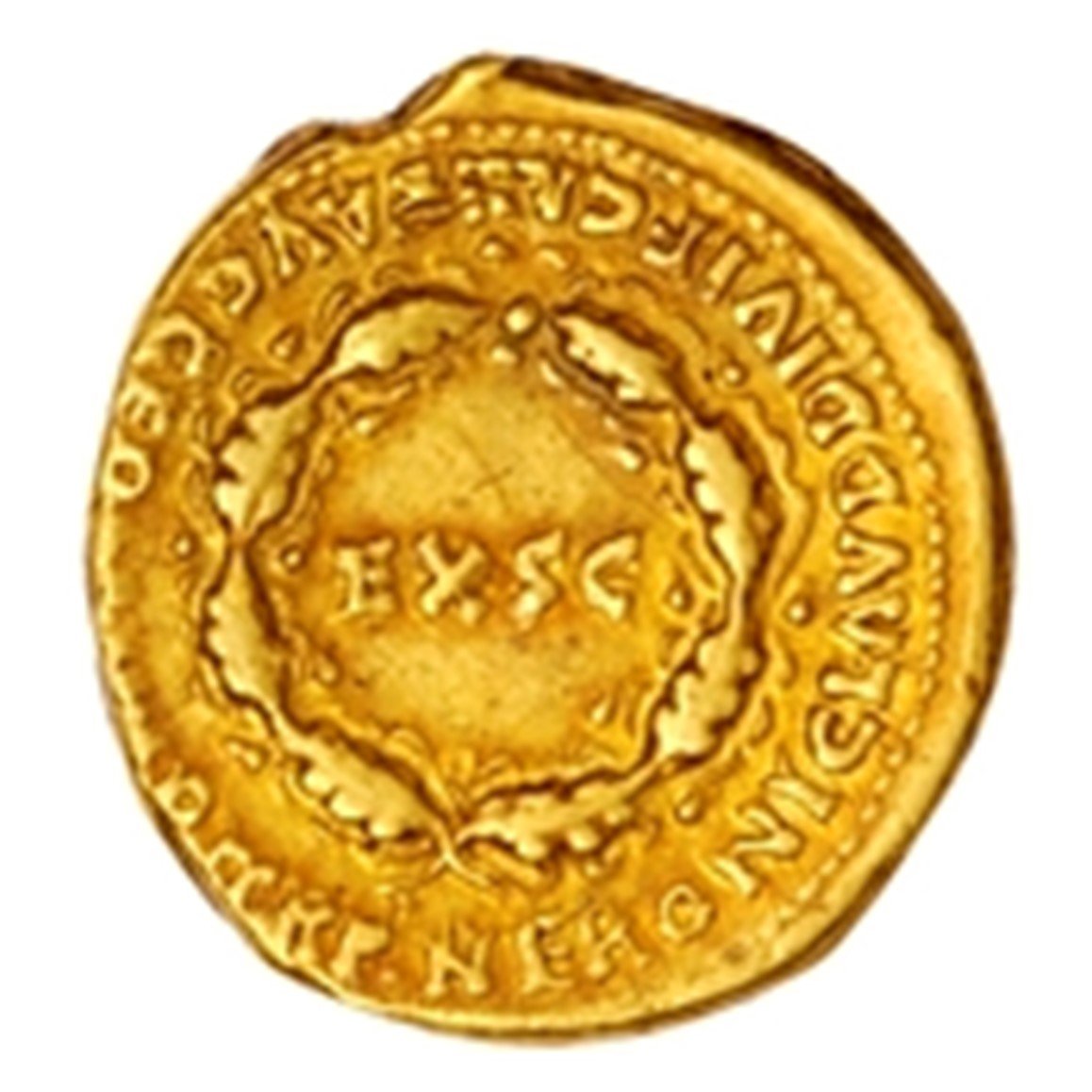Using coins to analyse the role of Agrippina the Younger in the Julio-Claudian dynasty
By Jemima O’Reilly, Second-Year Classics and Ancient History
Agrippina the younger was a central member of the Julio-Claudian dynasty. Throughout her life she defied societal norms about women’s status. A clear example was her depictions on imperial coinage. Coins were one of the easiest ways of familiarising the populace with the images of those in power. By looking at the individual designs on the obverse and reverse and how they work together, I will show how numismatics can work to narrate Agrippina’s rise to a central position in the dynasty and how she was in a unique position to provide both “retrospective” and “prospective” messaging in imperial iconography.
Through numismatics, we can use the images presented to better understand Agrippina’s rise and fall and the role she played within the Julio-Claudian dynasty, as contemporary sources in comparison to sources influenced by events decades after her death. Coinage from Roman mints would have shown how the Julio-Claudian dynasty wanted to be presented and how they wanted Agrippina to be presented.
Fig.1 Sestertius of Caligula from 37/38 CE.
When Caligula came into power in 37 C.E he commissioned a series of coins that depicted various relatives. One of these coins was a sestertius which showed the most prominent depiction of living female members of the imperial family to date. On the obverse is a bust of Caligula with the reverse depicting three standing figures named as AGRIPPINA, DRVCILLA and IVLIA, his sisters. This is the first example of living female members of the imperial family being depicted and named. They appear as personified abstracts of Securitas, Concordia, and Fortuna.
His sisters were given the privileges of the Vestal virgins and, unprecedentedly, their names were included in the oaths of allegiance. These familial honours and the imperial coinage not only rehabilitated the Emperor’s family, but also legitimised Caligula’s rule by invoking his lineage to present himself as the heir of Augustus.
The imagery also provided messages about the family’s present state and future concerns. The presentation of the sisters as “inseparably linked entities” underlined the unity of the new imperial family. This unity was a promise that the strife within the Julian-Claudian family, that had been particularly devasting for the family under his predecessor, was over and that Rome would now enjoy the security and good fortune that came from a united imperial family.
After her fall from Caligula’s favour, iconographic representation of Agrippina stopped. It was only after her marriage to her uncle Claudius, her brother’s successor, that she began to reappear.
When Claudius acceded to the role of princeps, he was married and had an heir. Although never made Augusta, Messalina was empress until 48CE. However, she fell from grace after a bigamous marriage and an attempt to overthrow Claudius, according to the accounts of Suetonius and Tacitus. The narratives suggest that she had left Claudius open to ridicule. The next empress would have to add to the image of the dynasty and provide crucial connections to strengthen Claudius’ position. Claudius’s marriage with Agrippina distanced him from this disgrace. Agrippina provided a valuable bloodline: her dual Julian-Claudian heritage.
Fig 2. Aureus of Claudius
In 50 CE a new coin was issued from the roman mint featuring Claudius on the obverse and Agrippina on the reverse (fig. 2). The reverse shows Agrippina facing right wearing a corona spicea with the legend AGRIPPINAE AUGASTAE.
The coin assimilates Agrippina with the goddess Ceres, the goddess of agriculture, grain and fertility. This assimilation has a ‘retrospective’ aspect through Agrippina’s portrayal with the goddess’s corona spicea and the use of her title, recalling imperial coins that depicted, posthumously, the emperor’s mother, Antonia. Antonia was considered the ideal Roman matron and women were expected to emulate her. As with previous depictions of Agrippina on imperial coinage there was the implication of her ability to produce an imperial heir. At the time this coin was struck, Agrippina was already a mother to Nero.
This depiction as Ceres builds into the idea of an imperial partnership. Spaeth has argued that the portrayal of imperial women as Ceres Mater was a claim to the role of Mater Patriae. Claudius’s claim to the role of Pater Patriae (‘P P’) on the obverse, would then have its counterpart in Agrippina’s portrayal as Ceres on the reverse. Agrippina was being presented as an almost equal partner in the principate, which accords with her actions in the literary record. Through her actions and her iconography Agrippina was advertising her ‘partnership in the empire.’
By the end of Claudius’s reign, Agrippina’s position as Augusta provided her with power, status and influence, a position that could be taken away if Claudius’s son, Britannicus, succeeded him instead of her own son, Nero. According to Tacitus, in 54 CE she murdered her husband and used her influence to ensure her son’s succession. As the Emperor’s mother her status rose. Early in Nero’s reign, Agrippina reportedly wielded more power than any earlier Augusta. This change in status was reflected on imperial coinage struck that year.
Fig 3. Aureus of Nero and Agrippina
This coinage (fig. 3) depicts on the obverse jugate busts of Agrippina and her son, the new emperor. Agrippina’s legend, AGRIPP AUG DIVI CLAUD NERONIS CAES MATER, was on the obverse and Nero’s on the reverse, NERONI CLAUD DIVI F CAES AUG GERM IMP TR P. This is the most prominent depiction of Agrippina on imperial coinage, showing her at the height of her power. The use of jugate busts presented Agrippina as her son’s equal and partner in the principate. This was its first use on a Roman coin. This show of equality was a sign of her crucial importance to the dynasty.
For the first time Agrippina’s legend was given in the nominative case, whereas her son’s, the Emperor, was given on the reverse in the dative. The significance is that the nominative was the case used for the individual commissioning the coinage, and the dative was for the dedicatee. The dative was also usually reserved for the subordinate figure which fostered an impression of an inequality of power. The use of these cases suggest that the coins were commissioned by Agrippina, acting as a de facto regent for her son.
This prominence was not to last. First Agrippina’s legend moved to the reverse and her son’s to the obverse (with similar changes to the use of cases) in 55CE. Later that year, numismatic portraits of her ceased. As the coinage had reflected her political standing, her omission from the coinage showed her fall from grace and loss of influence. This deterioration in the relationship between mother and son ended with Agrippina’s assassination in 59CE.
Through her numismatic depictions, Agrippina provided legitimacy to each of the Emperors and helped to provide a message of security and continuity. Agrippina’s representation on imperial coinage illustrated her influence and role within the dynasty, from potential mother of an imperial successor to Augusta, and finally as de facto regent, if only for a short time. Although coins are incredibly valuable as contemporary sources their value is limited by our lack of understanding of the process of deciding what imagery was shown and who had a say in the choices.
Bibliography
Barrett, A. A. 1996. Agrippina: Sex, Power, and Politics in the Early Empire. (New Haven: Yale University Press)
Cassius Dio Cocceianus, and Jonathan Edmondson. 1992. Dio, the Julio-Claudians : Selections from Books 58-63 of the Roman History of Cassius Dio. (London: London Association of Classical Teachers)
Ginsburg, Judith. 2006. Representing Agrippina: Constructions of Female Power in the Early Roman Empire. American Classical Studies, V. 50. (Oxford: Oxford University Press)
Rose, C. B. 1997. Dynastic Commemoration and Imperial Portraiture in the Julio-Claudian Period. (Cambridge: Cambridge University Press)
Spaeth, Barbette Stanley. 1996. The Roman Goddess Ceres. (Austin: University of Texas Press)
Suetonius. 1957. The Twelve Caesars, trans. By Robert Graves (London: Penguin Books)
Sutherland. C.H.V and Carson. R.A.G. 1984. The Roman Imperial Coinage, Volume 1 (London: Spink and Son LTD)
Tacitus. 1956. The Annals of Imperial Rome, trans. By Michael Grant (London: Penguin Books)
Wallace-Hadrill, A. 1986. “Image and Authority in the Coinage of Augustus.” JRS 76: 66–87.
Wood, S. 1995. “Diva Drusilla Panthea and the Sisters of Caligula.” American Journal of Archaeology, 99(3): 457-482
Coins:<https://numismatics.org/ocre/results?q=portrait_facet%3A%22Agrippina+the+Younger%22> [accessed 06.12.2022]






